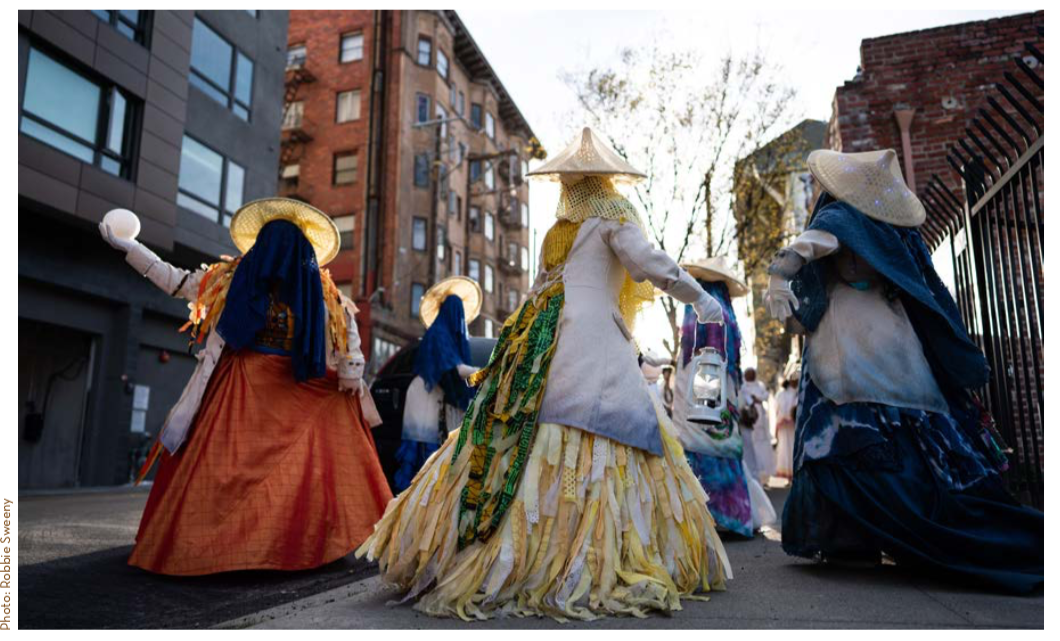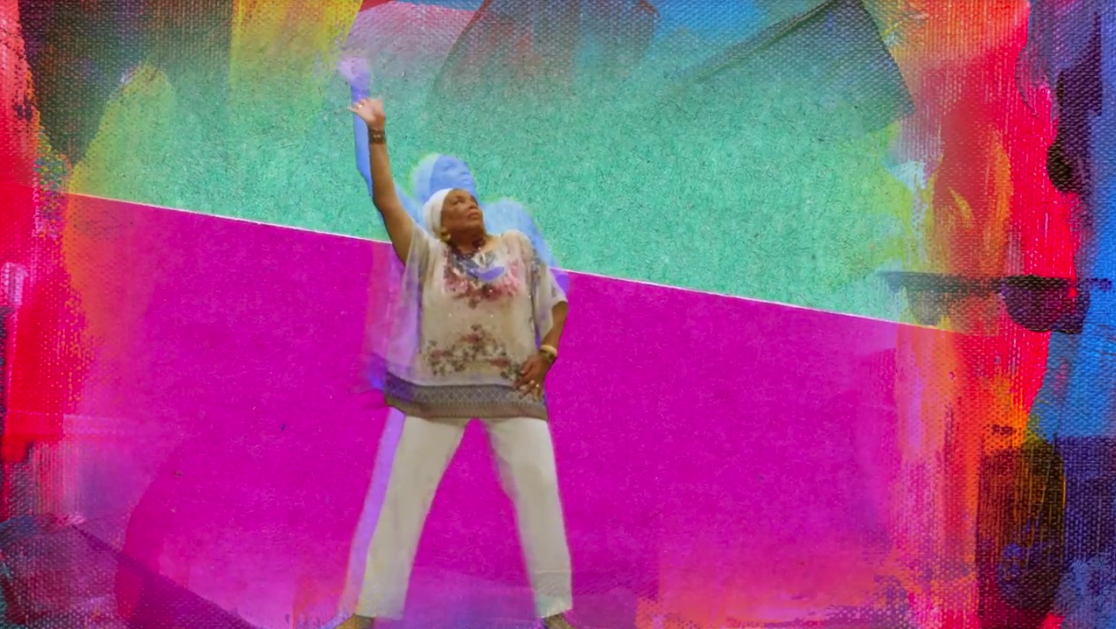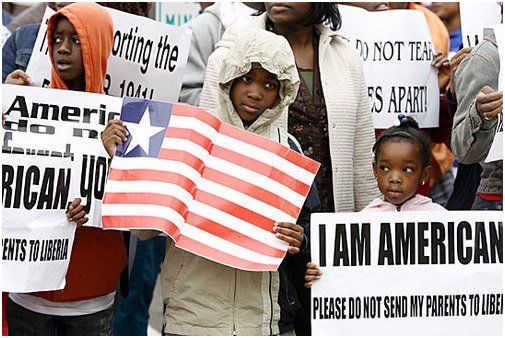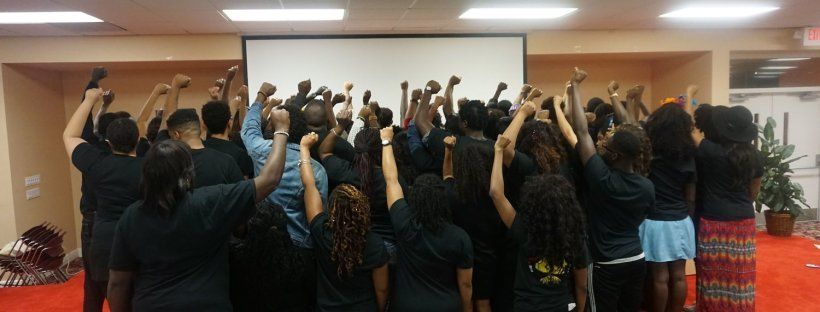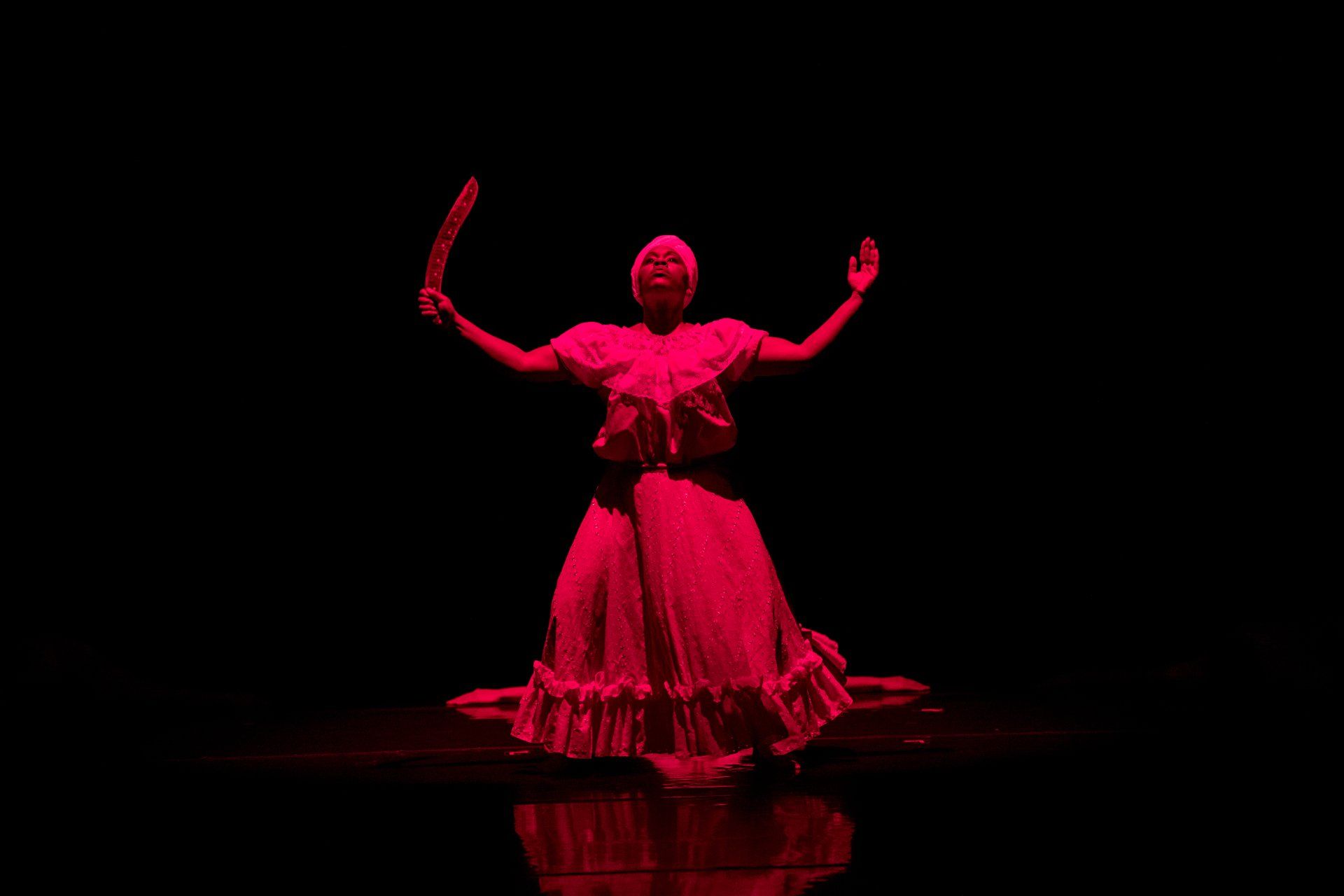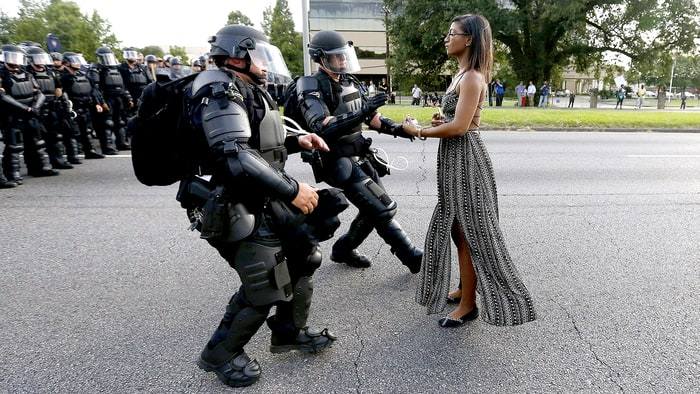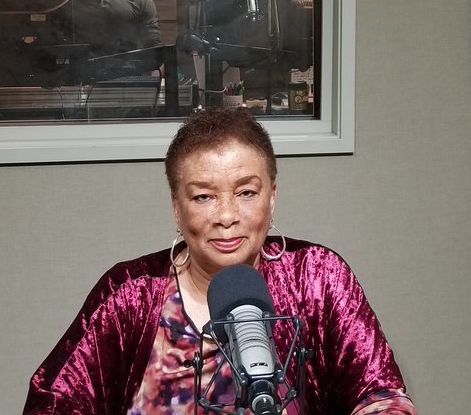By Halifu Osumare
•
March 27, 2021
There is something about this time, about this nowness that drives me; it ignites me [as] a Pan-African pursuit of Liberation. This could be defined as Social Change; it is most certainly a shifting paradigm . — Marjani Fortè-Saunders “There is something about this time,” dance artist Marjani Fortè-Saunders asserts, that harkens to the past, while simultaneously pointing us toward the future. I initiate this article on three phenomenal Black women dance artists by situating the four of us in a historical continuum of Amer- ican dance and “shifting paradigms” in the United States. I cannot be the objective authority on dance and Black choreographers; I must acknowledge my dancing voice in an activist lineage, which includes these three probing dance artists as current incarnations of a collective embodied liberation movement. Each of us represents a nexus on the historical lineage of Black dancing bodies seeking personal freedom while choreographing collective social change. I am a baby boomer from the activist San Francisco- Oakland Bay Area, who helped initiate dance as a medium of social change in the revolutionary late- 1960s, a generation that turned to Africa as a distinguishing element in our Black dance forms during our era’s Black Arts Movement. Amara Tabor-Smith, also from the Bay Area but of Generation X, pushed our work further with an increased understand- ing of African spirituality. Millennials Marjani Fortè-Saunders in Pasadena, Calif., and Jennifer Harge in Detroit approach social activism through dance utilizing internal probing, lodged in collective Black memory. Each of us are products of our time and generation. These three dance artists produce process-oriented performance in relation to their defined communities. Here, I explore their common aesthetic and metaphysical threads, while exposing their unique performative approaches. Black Radical Performance Each artist is engaged in uncompromising revolutionary performance work in the Black tradition. Marjani’s nomenclature of “Radical Black Performance” best captures the nature of their collective interrogation of the Black experience, past, present, and futuristically. At one level, their performance is radical because, rather than privileging themselves, each employs a communal methodology centering the community with which they engage. Philosophically, this choice emerges from an Africanist aesthetic characterized by individual invention that evolved out of a collectivist tradition; each artist’s vision is in dialogue with communal practices that grow over time through ongoing improvisation between vision and practice. Product — choreography or finished presentational work— takes a back seat to this open-ended process with community. Jennifer explains: “I’m constructing a somatic approach that is less concerned with western dance fluency, and more committed to a physical experience an- chored in Black interiority. I believe that Black Womxn and our bodies re- tain and uphold a breadth of narratives that are able to teach about histories of oppression and how we may continue to resist capture.” One can see this approach in her 2019 work FLY | DROWN, an installation piece focused on her grandparents’ migration from Tennessee to Detroit, interrogating how one makes home after leaving all that one knows. As Jennifer works through this dilemma in her own spirit, she reveals embodied exigencies of the Great Black Migration from the south to the north a century ago, from an internal perspective, rather than a polemic, as it might have in choreographies of earlier artists. Marjani has a similar philosophical approach to her movement explorations. She reflects on her process within her lineage: “I am merely a link in my generation’s chain of sorcerers, all imagining a liberation we’ve never known, and pursuing it ceaselessly through the bounty of our crafts.” She avails her- self to many Black crafts, intellectuals, and artists that inform her work, like philosopher and poet Fred Moten, author James Baldwin, pianist/composer Cecil Taylor, and choreographers Bill T. Jones and Jawole Willa Jo Zollar. The collaborative ensemble Marjani formed with her husband, musician/composer Everett Saunders, called 7NMS/Prophet, embraces the tagline: “The two tote a revolutionary commitment of art and performance as a ministry of liberation.” Amara, in northern California, is known for her large site-specific dance-theater performances driven by a community that includes ancestors. Her 2013 work He Moved Swiftly But Gently Down The Not Too Crowded of oppression and how we may continue to resist capture.” One can see this approach in her 2019 work FLY | DROWN, an installation piece focused on her grandparents’ migration from Tennessee to Detroit, interrogating how one makes home after leaving all that one knows. As Jennifer works through this dilemma in her own spirit, she reveals embodied exigencies of the Great Black Migration from the south to the north a century ago, from an internal perspective, rather than a polemic, as it might have in choreographies of earlier artists. Marjani has a similar philosophical approach to her movement explorations. She reflects on her process within her lineage: “I am merely a link in my generation’s chain of sorcerers, all imagining a liberation we’ve never known, and pursuing it ceaselessly through the bounty of our crafts.” She avails her- self to many Black crafts, intellectuals, and artists that inform her work, like philosopher and poet Fred Moten, author James Baldwin, pianist/composer Cecil Taylor, and choreographers Bill T. Jones and Jawole Willa Jo Zollar.The collaborative ensemble Marjani formed with her husband, musician/composer Everett Saunders, called 7NMS/Prophet, embraces the tagline: “The two tote a revolutionary commitment of art and performance as a ministry of liberation.” Amara, in northern California, is known for her large site-specific dance-theater performances driven by a community that includes ancestors. Her 2013 work He Moved Swiftly But Gently Down The Not Too Crowded Street was a tribute to San Francisco dancer/choreographer Ed Mock, who died in 1986, one of the region’s first AIDS victims. Mock was an important dancer/choreographer in San Francisco since the 1960s, and Amara joined his company; hence, she was “called” to create a work in tribute to him. The work was created within the larger context of gentrification and the city’s loss of many of its Black men. The 25 dancers per- formed in several outdoor settings throughout the city, including in front of Mock’s studio at 32 Page Street. As an initiated Yoruba priestess, Amara’s improvisational conversation with community often engages the dead, as in the case of He Moved Swiftly .... “The integration of my spiritual practice in my art making was influenced by my ancestors who kept com- municating to me that it was time to do so,” she says. “I made a decision to get out of the way and listen to them.” As a result, she calls her aesthetic “Afro Surrealist Conjure Art.” A second level of these artists’ Black Radical Performance is community engage- ment for social change, lodged squarely in socio-political activism. Amara’s 2019 House/Full of Black Women grew out of her partnership with Oakland’s MISSEY and with sex-trafficking abolitionist Regina Evans of Regina’s door, organizations that combat sex trafficking of youth. After anti-trafficking training, in 2015 Amara gathered a group of “20 Black women performers [into] activities that specifically address the issues of displacement, well-being, and the sex trafficking of Black women/femmes and girls in Oakland.” Her community of Black women performers made a five-year commitment to develop a process that engenders ritual performance episodes. Situated at various outdoor Oakland sites, the work often uses Egungun (ancestor) masquerade, based in Nigerian, Beninese, and Brazilian traditions. Amara’s adept creative process tapped a vital community social need and her performers’ communal performative process comingled in a ritual for social change. Marjani, along with Everett, created Art & Power, a platform and organization dedicated to Black wellness and innovation. Art & Power is multi-dimensional: “modeling collective action, spiritual transcendence, cross-sector engagement, and inheritance.” Marjani was a child schooled in Africanist alternative educational institutions by parents influenced by my generations’ Black Power and Black Arts Movements. Her resulting activist vision was reinforced by dancing with Jawole Willa Jo Zollar’s Urban Bush Women (UBW), which focused on community engagement as choreo- graphic process. As a lead facilitator (2007-2012) with UBW in cities where the company established long-term residences, she worked to bridge perfor- mance with community development. Amara, too, is underpinned by the UBW experience, having worked as its associate artistic director from 2004 to 2006. Now in southern California, Marjani has maintained a bi-coastal career, both artistically and politically, traveling between New York and Cal- ifornia for many years. Art & Power promises to be an important institution for personal artistic innovation and Black community advancement. Jennifer takes a personal approach to her activ- ism: “Social change in my practice looks like giving myself permission to create in ways that prioritize my full being, so it is super Black, it’s queer-affirming, and it’s slow, meaning I give myself agency to stay inside of creative ideas for long periods of time.” In her company, Harge Dance Stories, she chooses Black women “skilled with shifting course and practicing refusal, with a focus on personal and community caretaking.” Jennifer locates collective Black liberation “on a cellular level” that is revealed in the “DNA of the gospel church, improvisation, big juicy lyrical phrases, and the architecture and brava- do of rap music.” Nowhere is this Black DNA more apparent than in her performance piece “mourn and never tire,” staged directly on the pulpit of the Washington National Cathedral, surrounded by the choir, pastor, and deacons of the Episcopal church. It is a tribute to those fallen young, unarmed Black people at the hand of police — Philando Castile, Sandra Bland, Oscar Grant, Tamir Rice, Michael Brown, George Floyd, and so many others. Dressed in a black leotard, long black chiffon skirt and tennis shoes, she runs in place at the podium mic — literally running for their lives — in front of church elders, all the while reading the names, ages, and places of the fallen. Jennifer, barefoot, segues into an emotional embodiment of grief, as many parishioners wipe the tears from their eyes. The mission of “mourn and never tire” is to “process Black Americans’ relationship to endurance, death, and ancestry,” she states. Her dance activism becomes a communal internal process: “I’m now working less capitalistic, less transactional, and less product-oriented. I’ve given myself permission to be in process.” This takes more time than merely choreo- graphing a new work. After centuries of slavery, segregation, public Black political action, her work is the spiritual interiority that today’s Black Lives Matter activism dictates. Black Radical Performance takes many forms. Physical Historians of Black interiority Noted hip-hop choreographer Rennie Harris has said that the best dancers are physical historians, bringing forth the past through the body. Jennifer, Amara, and Marjani are indeed dancemakers who chronicle and embody vital issues, past and present. They do so through delving into inner pathways that speak a 21st-century ontology. Finding the heart-center of a burning concern, in process with community, characterizes their internal methodologies for communal healing of past and present oppressions. These artists engage dancemaking that harkens back to ancient rituals, like slavery-era Ring Shouts — the sacred African dance circles reinvented as New World healing rituals. Their communal ceremonies, meditations, and therapeutic discussions form a “new” sacred methodology for community restoration. These three choreographers employ aspects of this Black interiority in their choreographic works. Marjani’s Memoirs of a . . .Unicorn premiered at New York’s Collapsible Hole in 2017, “weaves personal and historic narratives” that fiercely interrogate her father’s story as prologue to her internal inquiry. The work becomes research into “the [internal] properties of Black American magic and resilience.” Her father, storyteller Rick Fortè, built the pyramid set designed by Mimi Lien, and he opens the work perched atop the set, weaving a magical tale ultimately about survival as Black man with his daughter in America. Marjani enters carrying a pan of water — a biblical reference to Jesus — then she gently takes off the shoes and socks of another Black male in the audience, to humbly wash his feet. Breaking the fourth wall is another characteristic that binds these artists, often performing in ceremonial ways to lead viewers beyond passive observation into complicit participation. In Jennifer’s FLY | DROWN, the set is a personal installation of “domestic markers” — pink carpet, plastic runner, old-school console television — that triggers deep memories of her post-migration grandparents’ home. Wearing Hanes-style white cotton panties, a sports bra, and a crystal sequined headdress draping over her face like an African mask, her trance-like jerky movements travel through the set to Sterling Toles’ and Boldy James’ “Requiem for Bubz.” Black legacy manifests as an inward process of memory rather than outward melodrama. Through her Deep Waters Dance Theater, Amara presented several epi- sodes of her site-specific ritual performance House/Full of Black Women (2019) in downtown Oakland. Oaklanders on the street at night during one masquerade episode find the Black female performers, swathed in white long dresses, veiled, and carrying flora and fauna. They ritualistically parade among cars driven by the question, “How can we, as Black women and girls, find space to breathe, and be well within a stable home?” There is no fourth wall, no theatrical side wings nor backdrop of a proscenium theater or black box studio; the streets and random people become the stage and set. The onlookers are forced to react, decipher, and participate in addressing this vital women’s issue. These three artists confront us. They challenge us. They allow us an oppor- tunity to take an internal journey with them. We are asked to imagine our own excursion into legacy and the search for love in this moment, in this now. Cinematographer and visual artist Arthur Jafa poignantly pronounced: “Black folks are the first postmodern subjects,” and Marjani continues the idea by saying, “abstracted from our land and cultural rooting, yet imbued with an, arguably, divine, or celestial capacity, to re-define, to re-appropri- ate, to re-member, endlessly!” Marjani, Amara, and Jennifer are all probing embodied memory as a lens into the Afrofuture. For further information, please visit the artists’ websites: Marjani Fortè-Saunders , Amara Tabor-Smith and Jennifer Harge.

